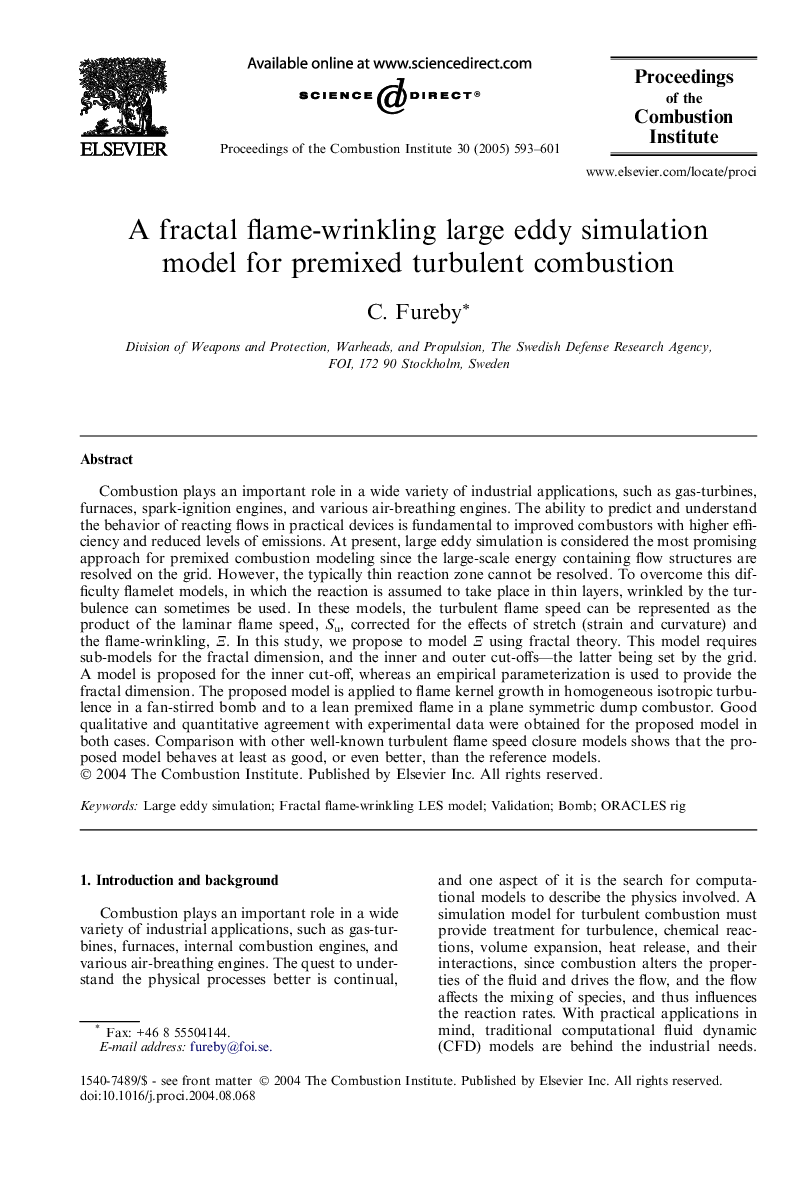| کد مقاله | کد نشریه | سال انتشار | مقاله انگلیسی | نسخه تمام متن |
|---|---|---|---|---|
| 9637381 | 1427931 | 2005 | 9 صفحه PDF | دانلود رایگان |
عنوان انگلیسی مقاله ISI
A fractal flame-wrinkling large eddy simulation model for premixed turbulent combustion
دانلود مقاله + سفارش ترجمه
دانلود مقاله ISI انگلیسی
رایگان برای ایرانیان
موضوعات مرتبط
مهندسی و علوم پایه
مهندسی شیمی
مهندسی شیمی (عمومی)
پیش نمایش صفحه اول مقاله

چکیده انگلیسی
Combustion plays an important role in a wide variety of industrial applications, such as gas-turbines, furnaces, spark-ignition engines, and various air-breathing engines. The ability to predict and understand the behavior of reacting flows in practical devices is fundamental to improved combustors with higher efficiency and reduced levels of emissions. At present, large eddy simulation is considered the most promising approach for premixed combustion modeling since the large-scale energy containing flow structures are resolved on the grid. However, the typically thin reaction zone cannot be resolved. To overcome this difficulty flamelet models, in which the reaction is assumed to take place in thin layers, wrinkled by the turbulence can sometimes be used. In these models, the turbulent flame speed can be represented as the product of the laminar flame speed, Su, corrected for the effects of stretch (strain and curvature) and the flame-wrinkling, Î. In this study, we propose to model Î using fractal theory. This model requires sub-models for the fractal dimension, and the inner and outer cut-offs-the latter being set by the grid. A model is proposed for the inner cut-off, whereas an empirical parameterization is used to provide the fractal dimension. The proposed model is applied to flame kernel growth in homogeneous isotropic turbulence in a fan-stirred bomb and to a lean premixed flame in a plane symmetric dump combustor. Good qualitative and quantitative agreement with experimental data were obtained for the proposed model in both cases. Comparison with other well-known turbulent flame speed closure models shows that the proposed model behaves at least as good, or even better, than the reference models.
ناشر
Database: Elsevier - ScienceDirect (ساینس دایرکت)
Journal: Proceedings of the Combustion Institute - Volume 30, Issue 1, January 2005, Pages 593-601
Journal: Proceedings of the Combustion Institute - Volume 30, Issue 1, January 2005, Pages 593-601
نویسندگان
C. Fureby,